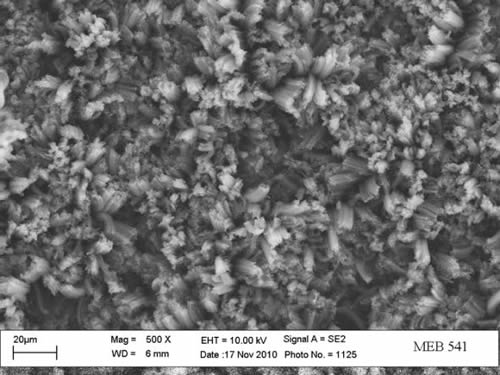 |

NASA engineers have successfully developed a special material that achieves absorption of more than 99% of light in the ultraviolet, visible, infrared, and far infrared wavelengths. The absorption rate of light in the ultraviolet and visible light bands is as high as 99.5%, while the absorption rate in wavelengths longer than the wavelength band and the far-infrared waveband is also 98%. The advantage over other materials is that the absorption rate is 10 to 100 times higher than the latter, and the specific performance depends on the band.
This material is a thin coating of hollow, multi-walled carbon nanotubes. The tiny pores between the nanotubes collect and capture background light to prevent it from reflecting off the surface and interfere with the light to be measured. Since only a small portion of the light reflects away, the human eye and sensitive detectors see the material as black. The material can be used on different surfaces of silicon, silicon nitride, titanium, stainless steel, etc., which are mainly used in space science instruments.
The more "black" the material, the more heat it can radiate. In other words, ultra-black materials, such as carbon nanotube coatings, can be used in environments that require the removal of equipment temperatures, which can help dissipate heat into outer space. This will help ensure the cooling of the equipment, so as to ensure a keen capture of dark and deep sky objects.
Lisheng Trading Co., Ltd. , http://www.jnbuckles.com
![<?echo $_SERVER['SERVER_NAME'];?>](/template/twentyseventeen/skin/images/header.jpg)